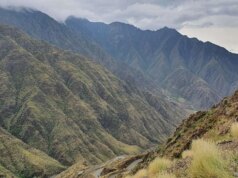If you’ve ever dreamed of embarking on a quintessential African safari, you’ve probably found yourself at a crossroads, deciding between the rolling grasslands of Kenya and the untamed wilderness of Tanzania.
It’s like choosing between two incredible flavors of the same exotic dish, isn’t it?
Both countries offer some of the most spectacular wildlife experiences on the planet.
But which is best: the Tanzania vs. Kenya safari?
In Kenya, imagine yourself in the legendary Masai Mara, witnessing the Great Migration in a once-in-a-lifetime spectacle as millions of wildebeest and zebra make their epic journey across the Mara River. Kenya offers the dramatic, postcard-perfect savanna experiences coupled with the vibrant cultures that color the country’s rich tapestry.
Meanwhile, Tanzania invites you into its own natural theater with the vast Serengeti, echoing the migrations of Kenya, but with a backdrop of the raw, imposing beauty of the Ngorongoro Crater and the chance to trek up the mythical Mount Kilimanjaro. Tanzania often feels more like the road less traveled, where the landscapes are untamed, and the wildlife roams free, away from the clicking shutters of the safari circuit.
Whichever you choose, you’re in for the adventure of a lifetime, filled with heart-stopping encounters and moments of sheer awe that only the African wilderness can offer. Let’s dive in and explore what sets these two safari giants apart and help you choose your next big adventure.
Grab your binoculars and your sense of wonder – Africa awaits!
Here is an overview:
Choosing between Kenya and Tanzania for an African safari ultimately depends on your preferences, interests, and timing.
Both countries offer incredible wildlife experiences and diverse landscapes. But…
There Are Some Distinctions to Consider
Wildlife
Both Kenya and Tanzania boast a rich array of wildlife, including the Big Five (lion, leopard, elephant, buffalo, rhinoceros) and other iconic African species.
Tanzania generally has larger populations of elephants and big cats, while Kenya’s parks are more compact.
Kenya’s arid zones offer unique desert specialists, while Tanzania is renowned for its forest animals, including chimpanzees and various primate species.
Related read: Top Places to See African Elephants

Landscapes
Kenya and Tanzania feature diverse landscapes ranging from savannas to forests.
Kenya is known for its Masai Mara National Reserve, which hosts the Great Migration from July to September.
Tanzania’s Serengeti National Park is where the migration primarily takes place from October through July or August.
Tanzania also offers opportunities to explore its lush forests and diverse ecosystems.

Accessibility and Infrastructure
Both countries have well-established tourism infrastructures and professional safari operators.
Kenya’s parks are often more accessible and compact, with shorter distances between them.
Tanzania’s vast expanses may require longer travel times between parks, but it offers more opportunities for remote and off-the-beaten-path experiences.
Timing
If witnessing the Great Migration is a priority, your choice may depend on the timing of your visit. The migration occurs primarily in the Serengeti, Tanzania, from October through July or August, and in Kenya’s Masai Mara during the rest of the year.
Related read: Best Time to Visit Serengeti National Park

Ultimately, whether you choose a Kenya vs. Tanzania safari, you’re likely to have an unforgettable experience.
Consider your priorities, the timing of your trip, and the specific wildlife or landscapes you wish to encounter when making your decision.
Both countries offer world-class safari experiences that showcase Africa’s natural wonders and wildlife diversity.
Indeed, the movements of wildlife, especially during events like the Great Migration, can be unpredictable and influenced by various factors such as weather patterns, food availability, and other environmental conditions. While there are general patterns and trends for migration in specific areas like the Serengeti and Masai Mara, the exact timing and locations can vary from year to year.
Nature’s rhythms aren’t bound by strict calendars, and wildlife doesn’t adhere to schedules. Therefore, even though there are typical migration seasons, the exact timing and routes can fluctuate. This unpredictability adds to the allure and excitement of embarking on a safari adventure, as each experience is unique and can offer unexpected encounters with wildlife in their natural habitats.
Safari guides and operators are skilled at reading the signs of nature and tracking animal movements, which enhances the chances of witnessing remarkable wildlife spectacles.
However, visitors should embrace the spontaneity and inherent unpredictability of wildlife viewing, understanding that nature operates on its own timeline. Flexibility and a spirit of adventure are essential when exploring the wilderness of Kenya, Tanzania, and other safari destinations.

Tanzania vs. Kenya Safari: More Tips To Help You Decide
Here are a few more differences between a safari in Tanzania vs. Kenya.
Great Migration and Wildlife
Tanzania typically hosts the Great Migration for more months of the year, while Kenya is known for offering the best river-crossing scenes during the migration.
Both countries offer unparalleled wildlife viewing experiences, with vast herds of grazing mammals and predators roaming their savannah grasslands.
Scenery and Landscapes
Kenya and Tanzania both feature stunning landscapes, with Kenya boasting attractions like Mount Kenya, the Aberdares, Rift Valley lakes, and northern deserts. At the same time, Tanzania offers iconic landmarks such as Mount Kilimanjaro, Mount Meru, the Crater Highlands, and lush rainforests in places like Gombe and Mahale Mountains National Parks.
Accommodation Options
Both countries offer excellent accommodation options across various budgets, including hotels, guesthouses, lodges, and tented camps.
Kenya’s growing community and private conservancy accommodations, especially in the Masai Mara and Laikipia Plateau, provide intimate and exclusive safari experiences.
Desert and Forest Exploration
Kenya’s northern deserts and semi-arid regions offer unique landscapes and wildlife habitats, while Tanzania’s lush rainforests and western regions are ideal for forest exploration and primate sightings.
Related Read: How to Get to Serengeti National Park From Arusha

Tour Example – Wildebeest Migration Crossing Mara River
Here’s an example of a tour that’ll take you over the Mara River to witness the Great Wildebeest Migration.
Day 1: From Arusha to Serengeti National Park (North)
In the morning, you will be collected from your hotel in Arusha and driven to the Serengeti National Park (North). The drive takes approximately 6 hours, including stops for lunch and game viewing along the way. Once inside the park, a game drive will take you to your camp or lodge for dinner and overnight.
Days 2-4: Exploring Serengeti National Park (North)
You have three full days to explore and observe the famous wildebeest migration in the northern part of the Serengeti National Park. Your experienced guide will ensure you visit prime locations depending on these magnificent animals’ locations. Morning and evening game drives offer the best opportunity to see wildlife at its most active. Return to the camp/lodge at midday for lunch and relaxation. Enjoy a stunning sunset game drive before returning to the camp/lodge for dinner and overnight.
Day 5: Return from Serengeti National Park (North) to Arusha
After breakfast at your camp/lodge, it is time to check out and make your way back to Arusha. As you leave the park gates, there is still an opportunity for a final game drive while enjoying a picnic lunch en route. You can expect to arrive in Arusha in the late afternoon when our driver will drop you off at either your hotel or the airport for your departure.
Note: This itinerary can be tailored to your specific interests and budget by including any special requests or additional activities/accommodation.
Keep in mind, that as this is a natural occurrence, the timing of the wildebeest migration cannot be guaranteed with absolute certainty.

Ultimately, whether you choose Kenya or Tanzania for your safari adventure depends on your specific interests, preferences, and the experiences you seek.
Both countries offer diverse wildlife, breathtaking scenery, and exceptional opportunities for memorable safari experiences.










